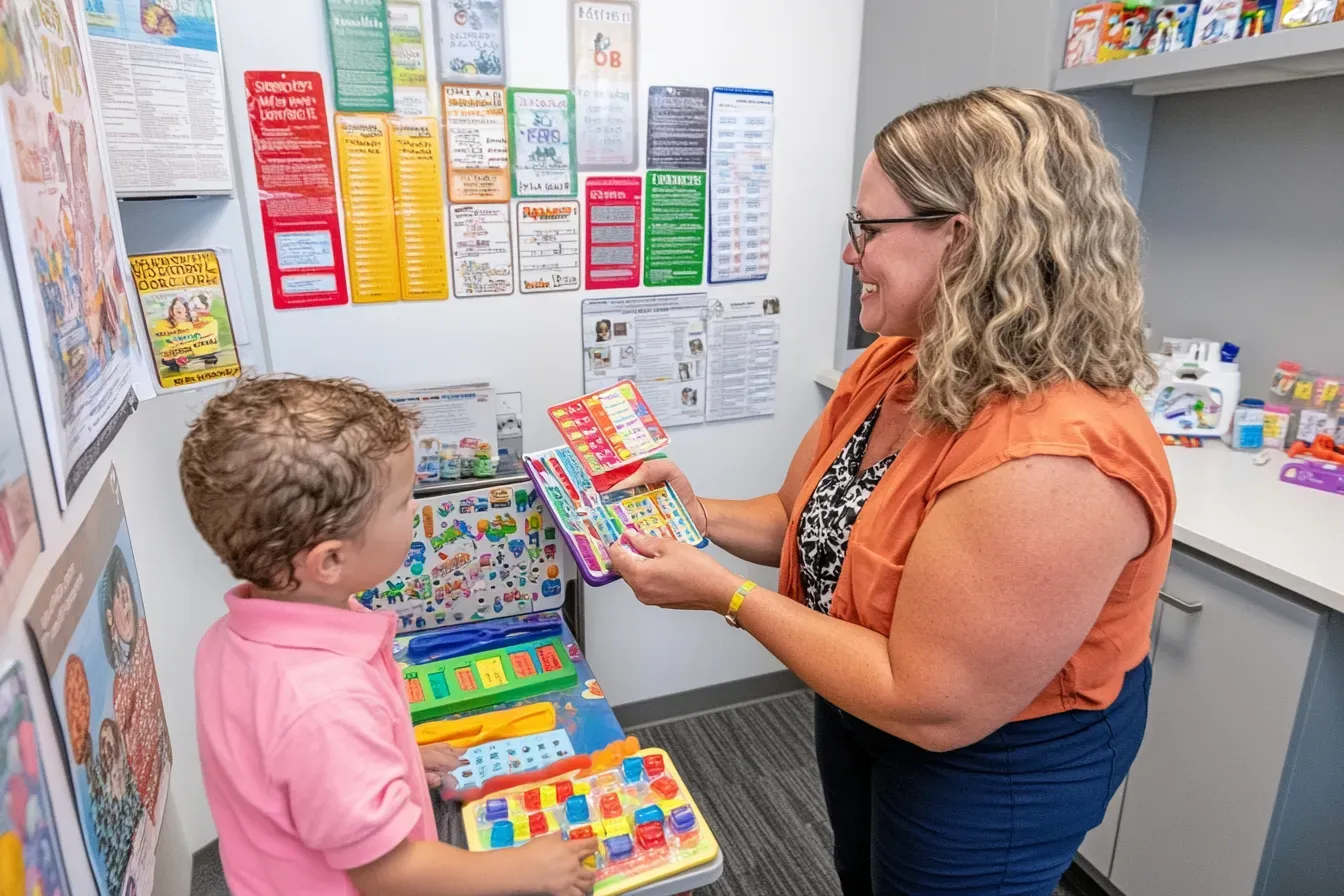Coddling College Students: Is the Safe Space Movement Working for 2026?
College is meant to be a melting pot of cultures and perspectives. It is meant to be a place where students can harness free speech and broaden their horizons by exposing themselves to unique views whether liberal or conservative. This is what is meant to open their minds and prepare them for the professional world. However, the exact opposite has been happening in the past few years. Students nowadays have developed a need to be protected from words and ideas that they deem hurtful or unacceptable — a trend that is now becoming more known as the coddling of the American mind (Lukianoff & Haidt, 2015).
As more and more learners demand safe spaces within their colleges, “language police" and “political correctness" have become the norm and so is vindictive protectiveness. In this article, we will outline how educational institutions are coping with this new culture of building safe spaces in colleges to meet the needs of students. In addition, this will also briefly discuss safetyism and its impact on the dissemination of knowledge in higher education. With this, teachers and learners alike can understand this trend and learn how to keep up.
Table of Contents
- What is the Safe Space Movement?
- How American Colleges are Creating Safe Spaces
- Is Safetyism Necessary?
- What Strategies Can Educators Use to Navigate Safetyism in the Classroom?
- Can online education offer a balanced approach to academic rigor and inclusivity?
- Potential Disadvantages of Safetyism
- Safe Space Movement on Mental Health and Emotional Resilience
- Can vocational education offer a pragmatic alternative amid safetyism?
- How can evidence-based strategies address safetyism's challenges?
- How does safetyism impact scholarly research and innovation?
- How can students find affordable educational opportunities?
- Preparing Students for the Workforce Amid the Safetyism Debate
- Can alternative certifications enhance career readiness in a safetyism-influenced academic environment?
- How does safetyism influence graduates' career advancement and salary prospects?
What is the Safe Space Movement for 2026?
The meaning of safe space is a place where students can associate or interact with those who are like them—ideologically, racially, sexually, or by any other measure (Sigal & Ben-Porath, 2017). With the increasing number of hate incidents in schools, many colleges have begun to establish safe places within their campuses. The idea behind it is to protect students who are in immediate emotional danger or those who felt personally harassed.
As Baer opines, the safest college towns in America have existed for as long as modern colleges have offered dormitories segregated by gender or places for students of non-dominant faith (Baer, 2019). The grand motive was, at least until recent years, to provide threatened students with asylum from violence or hatred. But the events of the last few years have toppled the real purpose of what is a safe space originally.
From a place where targeted students would seek refuge, safe places have morphed into a hiding place for students who do not like listening to diverse ideas. The line between being protected and hiding from ideas or beliefs that go against their own is being blurred.
And something strange is brewing within today’s campuses: the safe space movement is rising steadily. Academic performance statistics show that proponents of this movement or 36% of students with impressionable minds want campuses free of words, subjects, and ideas that might give offense or cause discomfort (Brown, 2017).
On the other hand, 37% of college students express why safe spaces are bad and it is because safe places are completely out of touch with reality. The movement, they say, is a powerful headwind to every university’s endeavor to maintain intellectual candor and teach vital yet controversial ideas.
How American Colleges Are Creating Safe Spaces
Whether you agree with it or not, the idea to create safe spaces on campuses has burst forth so powerfully in recent times. It has grown in popularity and creating them has become one of the most polarized discussions about free speech and social justice in modern universities: the coddling of the American mind.
So, how are American institutions contributing to this dilemma? Are safe spaces boosting the chances of students to have a comfortable time in college or is it ruining it to the point that some students would see it as a reason not to go to college?
Embracing Emotional Reasoning
Emotional reasoning is taking feelings as facts. It simply means that because an individual feels a certain way that it is definitely true or going to come true. For example, “I feel like the future is bleak" so it must mean “the future is obviously black and so hopeless".
Emotions stir up an individual to make decisions and take actions with regard to an imagined or experienced event. As researchers put it, “in the same way that cognitive constraints impact reasoning, so do emotions (Valerie & Benjamin, 2019). But despite the power of emotions, subjective feelings can be flawed guardrails when it comes to understanding the world around us, sorting out the truth from falsehood, and making judgments.
Emotional reasoning is a subject that has become one of the pervasive and entrenched discussion and debate topics for students in many colleges. The cases that portray the entitlement to a right not to be offended have become prevalent in campuses these days. A good example is the circumstances that led to the cancellation of the Hump Day event at the University of St. Thomas, in Minnesota in 2019.
Students at the institution created a Facebook Page to vent their displeasure with the event. Part of the claim was that the event promoted animal cruelty, was a total waste of money, and was being insensitive to the people from the Middle East. The organizers gave in to the pressure and decided to void the event claiming it “would make for an uncomfortable, possibly unsafe environment".
Disinvitation
Another thing that is creeping into college campuses is mental filtering—a case where a person picks negativity in a situation and harps on it, thus taking the entire situation as negative. In turn, mental filtering has led to what is rising as disinvitation in campuses.
This cognitive distortion started gathering steam during the 2014’s “disinvitation season." Cases where students and faculties demand commencement speakers be disinvited based on things they have previously said, are becoming rampant. A recent study by the Foundation for Individual Rights in Education has revealed that since 2000, more than 200 public figures have been disinvited from appearing at campus events because of their views on gender, immigration, racism, politics, abortion, and more (FIRE, 2020).
One of the most eminent disinvitation targets is Condoleezza Rice—former United States Secretary of State. In 2014, students and faculty protested Rice’s invitation as a commencement speaker due to her role in the torture of detainees and the Iraq war. In the face of immense opposition, she withdrew and was never re-invited.

Using Trigger Warnings
A trigger warning, as per the definition in the Oxford Dictionary, is a phrase or statement at the start of a video or piece of writing warning the viewer or reader of the fact that it has potentially distressing content. Sending a warning before saying or presenting content that might cause a negative emotional response is not a new ideology.
It has been around since World War I, when psychiatrists treating soldiers for post-traumatic stress disorder (PTSD) realized that words can potentially trigger excruciating memories of past trauma. However, trigger warnings broke into mainstream use in the early days of the internet, reaching an all-time high in 2015.
The use of trigger warnings is the newest wave to hit campuses across the U.S. College students have begun to demand that their professors give trigger warnings before presenting courses or content that could ignite strong emotional responses. This has led to the institutionalization of the use of trigger warnings on campuses, thereby affecting what can be said in the lecture room.
Some institutions are buckling under the new students’ demands. For example, in 2013, Oberlin College in Ohio, through a task force that included students, administrators, a faculty member, and recent alumni, created an online resource that listed topics that warranted trigger warnings. The list included topics such as classism and privilege and also advised faculty members to avoid, in totality, materials that might trigger negative emotional reactions.
Even though Oberlin College later quashed the online resource, it was archetypical of what is brewing under the surface in our campuses. The calls for trigger warnings, however, are permissible because some course reading may reactivate memories of students with PTSD. That said, preventing this reactivation defies the basic tenets of psychology and is not the way to go.
As Keith posits, the tendency of a PTSD patient to avoid potential triggers is taken as a symptom of the disorder (Keith, 2019). The best way to treat the ailment often entails working to overcome the psychological tendency. As such, the patient ought to engage and confront the fear to ultimately surmount the trigger stimuli. But the current use of trigger warnings on campus promotes avoidance of the psychological tendency.
Addressing Microaggressions
Microaggressions, according to the diversity, inclusion, and anti-racism consultant Tayo Rockson, have been used in academic circles since the 1970s. They are small behavioral indignities and casual verbs against people of color, the disabled, women, young or old people, immigrants, and so forth (Rockson, 2019). These regular verbal or nonverbal snubs or slights seen on their faces harbor no malicious intent but are thought of as a form of violence nonetheless.
In recent years, however, microaggression has expanded beyond its usual definition to cover anything that is perceived as discriminatory on just about any basis. In some cases, even joking about the use of microaggression is presumed to be an aggression worth a punishment.
This rang true for Omar Mahmood, a budding author and student at the University of Michigan. When writing for The Michigan Review—a conservative student publication, Mahmood poked fun at a campus’ tendency to find microaggressions in virtually anything. The Michigan Daily—Mahmood’s other employer—did not take his satirical writing well and as a result, terminated his contract. Mahmood would later face a backlash from a group of women who vandalized his doorway with hot dogs, eggs, and notes calling him a “violent prick."
The thing is, people will make veiled sexist or racist remarks on campuses, and students are rightfully entitled to question such cases. But with emotional reasoning becoming a mainstay, coupled with the increased focus on microaggressions, the stage is set for constant student outrage. The worst thing, all the vices are slamming the door shut for well-meaning speakers whose only aim is to engage in genuine, honest discussions.
Is Safetyism Necessary?
The calls for safety on college campuses are understandable. In fact, keeping students, mostly the vulnerable ones, from harm and danger is virtuous. For example, we know for most of American history, universities were dominated by upper-class white Christian men. When the institutions of higher education began to promote inclusivity, it made sense to take steps to protect the minority and make them feel safe on campus.
The increasing number of hate incidents (SPLC, 2018) signals why it was right to create a climate devoid of threats on campus. But when this virtue is taken to the extremes of the ideological and emotional realms, it can insidiously become a vice. And a culture of “safetyism"—including trigger warnings and safe spaces—treads this detrimental path.
What Strategies Can Educators Use to Navigate Safetyism in the Classroom?
Educators can adopt evidence‐based approaches that balance student well-being with the need for rigorous, open discussions. Establishing clear classroom guidelines that promote respectful debate allows for diverse viewpoints without compromising emotional safety. Faculty may employ structured dialogue methods and moderated discussions that encourage critical analysis while minimizing the risk of oversensitization. Integrating digital resources and supplemental online programs—such as the top online colleges offer—can enhance learning flexibility and expose students to a broad spectrum of ideas. Additionally, targeted professional development and periodic reviews of pedagogical strategies help maintain an environment that fosters resilience without diluting academic challenge.
Can online education offer a balanced approach to academic rigor and inclusivity?
Digital learning environments are emerging as viable alternatives that combine structured academic debate with inclusive, supportive spaces. These platforms maintain rigorous curricula and foster critical thinking through moderated discussions and collaborative projects, ensuring that diverse viewpoints are explored without compromising academic integrity. Moreover, the cost efficiencies of online programs allow students to pursue high-quality education without excessive financial burden; for example, opting for the cheapest bachelor degree can deliver a comprehensive curriculum in an accessible format.
Potential Disadvantages of Safetyism
Besides negating the advantage of studying abroad and the benefits of a multicultural campus environment, the continued coddling of the American mind can:
Sets Up Students for Failure
Barack Obama—44th president of the United States—in a speech delivered to high school graduates in Des Moines, Lowa, said:
“The purpose of college is not just to impart skills. It is also to broaden a student’s horizons, to enable them to evaluate information and be more creative to make their own way through the world." To achieve this goal, he said, we must create a free space where ideas are shared and collide, people have arguments and get out of their own narrow view, and test each other’s theories with a broader point of view (Rose, 2017).
Safetyism advocates the contrary. It encourages students to openly and vigorously repel ideas and words that they find unsuitable. It suppresses speech and does not teach students how to toughen up and take the bull by its horns. As a result, safetyism may inevitably set up these students for failure in life.
Promotes Intolerance for Opposing Viewpoints
College should value civility and all members of the institution, both students and faculty members, should strive to maintain an environment of mutual respect. However, the tenets of mutual respect and civility cannot be used in any way to justify the shunning of the discussion of ideas, however disagreeable or offensive those ideas may be.
Safetyism has led to the increasing intolerance of opposing viewpoints. As Michael Bloomberg—founder of Bloomberg LP —posits, the rising intolerance is growing into an insurmountable challenge on college campuses and in the national political discourse (Davis, 2018). It jeopardizes democracy as students are not taught to understand what is happening and why—so that they can take action in a word short of neat solutions.
It Stifles Dialogue on Important Topics
The increasing demand for trigger warnings in schools has the potential to impact how professors deliver lectures, particularly on difficult and controversial topics. In fact, a majority of educators find that it may have a negative impact on academic freedom (62%) and classroom dynamics (45%) (NCAC, 2019).
According to Inside Higher Ed, among the many concerns of lecturers is that they are unable to anticipate what triggers students. As such, professors, particularly those who are untenured, often hesitate to discuss complex and disturbing materials that could be pertinent to the topic at hand. This, in turn, stifles dialogues on important issues and prevents students from fully understanding certain concepts. What is more, restricting certain discussions may also keep the students from expressing themselves freely for fear of offending a fellow learner.
Perceived Effects of Trigger Warnings in Campuses
How does the safe space movement impact mental health and emotional resilience among students?
The rise of safe spaces on college campuses, while intended to protect students from harm, can have significant effects on mental health and emotional resilience. Although the goal is to create environments that support vulnerable students, the implementation of these spaces may inadvertently hinder students' ability to cope with challenges they will face outside of college.
Here are some key points to consider:
- Reduced emotional resilience: By shielding students from ideas or topics that might cause discomfort, safe spaces can limit their exposure to differing perspectives, making it harder for them to develop the emotional resilience needed to navigate difficult situations in the future. Avoiding discomfort may create a sense of fragility, where students become less capable of dealing with adversity.
- Potential for increased anxiety: While safe spaces aim to reduce anxiety by offering protection from distressing topics, the long-term impact may be the opposite. Avoidance of uncomfortable topics or conversations can lead to heightened anxiety when students inevitably encounter them in real life, outside the confines of college.
- Impediment to critical thinking and coping skills: Engaging with challenging ideas is a vital part of college education and personal growth. By limiting exposure to opposing viewpoints, students miss the opportunity to practice critical thinking and develop coping mechanisms that help them handle disagreement or discomfort in a healthy and productive manner.
- Fostering dependence on external validation: Safe spaces may create a dependency on external protection rather than fostering internal emotional strength. Students might rely on institutional mechanisms to shield them from discomfort, which could delay the development of self-reliance and personal emotional regulation.
Can vocational education offer a pragmatic alternative amid safetyism?
Vocational education, with its emphasis on skill application and experiential learning, provides a distinct pathway that addresses the limitations of overly protective academic environments. This approach equips learners with hands-on expertise that directly responds to market demands while fostering resilience through real-world problem solving. Notably, pursuing career-specific training can stimulate adaptability and practical judgment—qualities essential for thriving in complex professional landscapes. Additionally, many mature students and career changers are turning to online trade schools for adults as a viable option that balances affordability with a direct link to industry needs.
How can evidence-based strategies address safetyism's challenges?
Research indicates that combining empirical pedagogical methods with structured emotional support can mitigate the adverse effects of safetyism. Institutions that incorporate moderated debates, resilience training sessions, and incremental exposure to challenging perspectives have reported improved critical thinking and adaptability among students. Moreover, some accelerated pathways, such as the easiest associate degrees, offer efficient routes to credentialing while maintaining academic rigor. Continual data-driven evaluations help ensure that these strategies remain aligned with both evolving student needs and the imperatives of intellectual engagement.
How does safetyism impact scholarly research and innovation?
Research indicates that the emphasis on protecting students from controversial ideas may extend its influence to academic inquiry and research. Faculty and researchers sometimes avoid engaging in challenging debates, which can restrict innovative thinking and limit the diversity of scholarly exploration. This cautious approach may inadvertently suppress experimental methodologies and reduce the opportunity for breakthrough discoveries. As institutions strive to balance safety concerns with academic integrity, they must ensure that policies do not compromise rigorous investigation or discourage expansive intellectual inquiry—an approach that even extends to advanced programs like the cheap online doctorate.
How can students find affordable educational opportunities?
The rising trend of safe spaces on college campuses might distract from another important consideration for many students: the cost of higher education. With tuition fees climbing year after year, many students are now seeking more affordable educational alternatives. One way to reduce the financial burden of earning a degree is by enrolling in an online master's program, which offers flexibility and often lower tuition costs compared to traditional, on-campus options.
While choosing a cost-effective path, students should also consider the quality of education they will receive. A valuable option for those seeking the most affordable and reliable programs can be found through the cheapest online master's programs, which compile and rank degrees that offer the best balance of affordability and academic rigor. These online programs are not only convenient but are designed to meet the diverse needs of students who may face financial constraints.
Investing in a more affordable program does not mean sacrificing the quality of education. Many accredited online programs are tailored to help students develop skills that are directly applicable in today’s job market, making them a worthwhile consideration for those who want to make the most of their educational investment.
Preparing Students for the Workforce Amid the Safetyism Debate
As colleges grapple with the safetyism debate and its implications on academic freedom, it's important to consider how these dynamics influence students' preparedness for the professional world. One critical concern is the ability of graduates to navigate workplaces where ideological diversity and challenging discussions are commonplace.
Employers across various industries value graduates who can demonstrate resilience, critical thinking, and the ability to engage constructively with differing viewpoints. If higher education overly shelters students from discomfort or opposing ideas, it may inadvertently leave them unprepared for the complexities of the modern workforce. Building emotional and intellectual resilience becomes pivotal, allowing students to address disagreements or adversity in a professional and constructive manner.
For students seeking an edge in preparing for the workforce, pursuing focused educational opportunities can be an invaluable step. Programs such as accelerated bachelors degree programs provide a fast, flexible path to acquiring credentials and relevant skills for today’s job market. Through these programs, students not only gain knowledge but also develop the ability to manage rigorous academic demands—an essential quality sought by employers. Institutions that balance a commitment to student well-being with exposure to real-world challenges help cultivate graduates who are ready to excel both professionally and personally.
Colleges and universities should aim to create an environment where students are encouraged to engage in respectful debate and intellectual exploration, all while being mindful of their overall safety. This balance can foster a culture of dialogue and critical engagement that equips students for the demands of post-college life.
Can alternative certifications enhance career readiness in a safetyism-influenced academic environment?
In an atmosphere where traditional academic experiences may be constrained by overprotective policies, pursuing targeted certifications can offer a pragmatic supplement. Industry-recognized credentials, such as easy certifications for jobs, provide a direct way to acquire hands-on skills that are immediately applicable in the workforce. These alternative qualifications bridge gaps in experiential learning by emphasizing practical expertise and adaptability, thereby reinforcing students’ competitiveness in dynamic job markets.
How does safetyism influence graduates' career advancement and salary prospects?
Emerging research indicates that the balance between protective campus policies and fostering robust problem‐solving skills can impact long‐term career outcomes. Metrics such as job placement rates, mid‐career progression, and comparative salary analyses provide tangible evidence of how educational approaches translate into real-world success. Quantitative studies have drawn attention to compensation disparities across educational pathways, as evidenced by differences in bachelor degree vs associate degree salary.
Institutions that complement supportive environments with rigorous experiential learning and targeted career counseling tend to report improved readiness for complex workplace challenges. Balancing student well-being with the cultivation of resilience and analytical aptitude enables graduates to navigate professional settings effectively and secure sustainable career advancement.
Balancing Safetyism and Academic Freedom
There is no doubt that building safe spaces for students and reducing college stress is essential. After all, expanding one’s knowledge and earning a diploma should not come at the cost of being exposed to any form of discrimination, microaggression, or harassment. However, with the safe space examples outlined in this article, educators and students alike should start determining where to draw the line by weighing the pros and cons of safe spaces.
The world is full of ideas and words we cannot control. That said, shielding students from certain words and ideas or people with whom they disagree may end up hurting their mental health in the long run. This is because, whether they like it or not, they will inevitably encounter these ideas and words later in life.
Educational institutions should jump forth and strive to balance freedom of speech with the need for protection on campus. Keeping in mind the acts of mutual respect, compromise, and negotiation are critical life skills that cannot be taught within the secluded “safe spaces."
Parents also have a role to play. They should understand that undergraduate students are young adults and what they acquire on campus will shape not only their career but life. For this reason, they should be calm about student fragility and encourage their sons and daughters to face problems courageously.
Key Insights
- Growth of Safe Spaces Movement: The safe space movement in American colleges is growing, with an increasing number of students seeking protection from ideas and speech they find offensive or uncomfortable.
- Impact of Emotional Reasoning: Emotional reasoning, where students take their feelings as factual evidence, is influencing campus policies and events, often leading to the cancellation of activities deemed offensive.
- Rise of Disinvitation: There has been a significant rise in disinvitations of speakers with controversial views, impacting the diversity of thought and discourse on campuses.
- Use of Trigger Warnings: The use of trigger warnings in academic settings is increasing, with students demanding warnings for potentially distressing content, affecting how professors teach sensitive topics.
- Addressing Microaggressions: Microaggressions, or subtle, often unintentional discriminatory remarks, are a growing concern on campuses, leading to heightened sensitivity and reactions among students.
- Safetyism's Potential Disadvantages: Safetyism can set students up for failure by discouraging resilience and tolerance for opposing viewpoints, ultimately stifling important dialogues and academic freedom.
- Balancing Safety and Free Speech: There is a need to balance the creation of safe spaces with the preservation of academic freedom and open discourse, ensuring students are prepared for diverse perspectives in the real world.
FAQ
- What is the safe space movement? The safe space movement involves creating areas on college campuses where students can interact with those who share similar ideologies, identities, or experiences, providing protection from offensive or hurtful ideas and speech.
- How are colleges creating safe spaces? Colleges are establishing designated areas for like-minded students, incorporating policies that protect students from offensive content, and responding to student demands for such spaces and protections.
- What is emotional reasoning? Emotional reasoning is the cognitive process where individuals take their feelings as factual evidence, leading to decisions and actions based on how they feel rather than objective reality.
- What is disinvitation? Disinvitation refers to the practice of rescinding invitations to speakers due to their controversial views, often following protests or opposition from students or faculty.
- What are trigger warnings? Trigger warnings are alerts given before presenting content that might evoke strong emotional responses, used to prepare or protect individuals from distressing material.
- How do microaggressions impact students? Microaggressions are subtle, often unintentional discriminatory remarks that can contribute to a hostile or uncomfortable environment for marginalized groups, leading to heightened sensitivity and reactions.
- What are the disadvantages of safetyism? Safetyism can lead to a lack of resilience, intolerance for opposing viewpoints, and a stifling of important academic discussions, ultimately setting students up for challenges in the real world.
- Why is balancing safety and free speech important? Balancing safety and free speech is crucial to ensure students are exposed to diverse perspectives and are prepared to engage with differing viewpoints, fostering a well-rounded and resilient mindset.
- How can parents support their children in college? Parents can support their college-aged children by encouraging them to face challenges courageously, fostering resilience, and emphasizing the importance of engaging with diverse ideas and perspectives.
References:
- Baer, U. (2019). What Snowflakes Get Right: Free Speech and Truth on Campus. London, UK: Oxford University Press. Google Books
- Ben-Porath, S.R. (2017). Free Speech on Campus. Philadelphia, PA: University of Pennsylvania Press. Google Books
- Brown, M. (May 17, 2017). What Do College Students Think About Safe Spaces? Hoboken, NJ: LendEDU.
- Costello, M., & Dillard, C. (SPLC) (2018). Hate at School Report. Teaching Tolerance.
- Davis M. (September 05, 2018). Learning Isn’t Supposed to Be Safe. Champaign, IL: National Council of Teachers of English.
- FIRE. (2020). Disinvitation Attempts. Philadelphia, PA: Foundation for Individual Rights in Education.
- FIRE. (May 5, 2014). ‘Disinvitation Season’ Rolls On: Condoleezza Rice Cancels. Philadelphia, PA: Foundation for Individual Rights in Education.
- Keith E. W. (2019). Speak Freely: Why Universities Must Defend Free Speech. Princeton, NJ: Princeton University Press. Google Books
- Lukianoff. G & Haidt, J. (2015, September). The coddling of the American mind. The Atlantic.
- NCAC (2019). Trigger Warnings: A National College Educator Survey. New York, NY: National Coalition Against Censorship.
- Rockson, T. (2019). Use Your Difference to Make a Difference: How to Connect and Communicate in a Cross-Cultural World. New York, NY: Wiley & Sons. Google Books
- Rose F. (May 30, 2017). Safe spaces on college campuses are creating intolerant students. HuffPost.
- Valerie M. H., & Benjamin S. D. (2019). Foreign Policy Analysis: Classic and Contemporary Theory. Lanham, MD: Rowman & Littlefield. Google Books


































